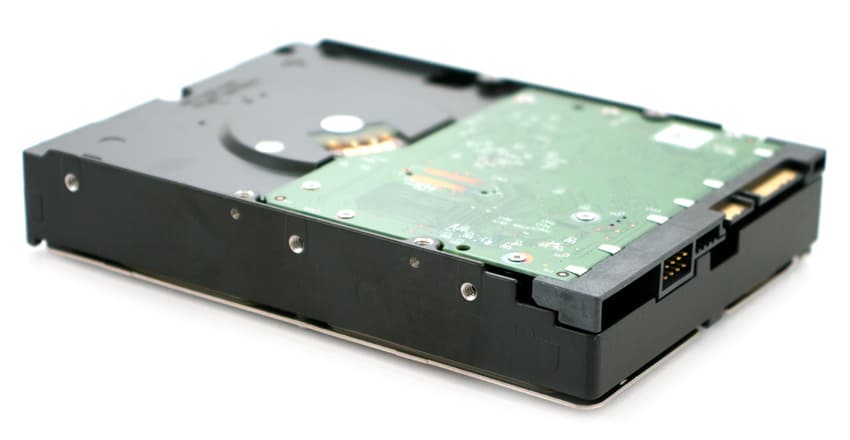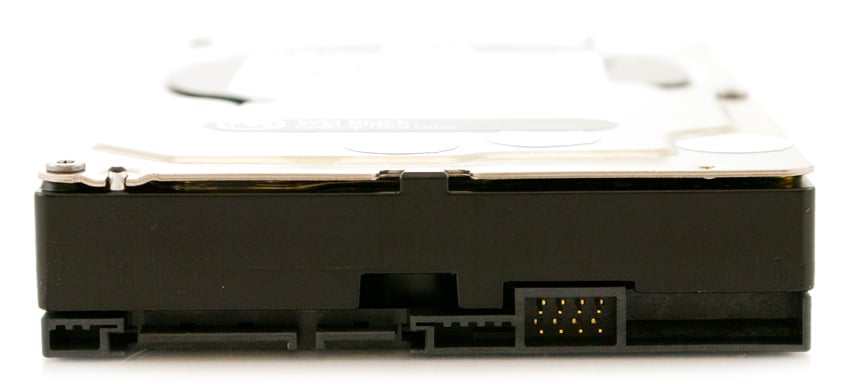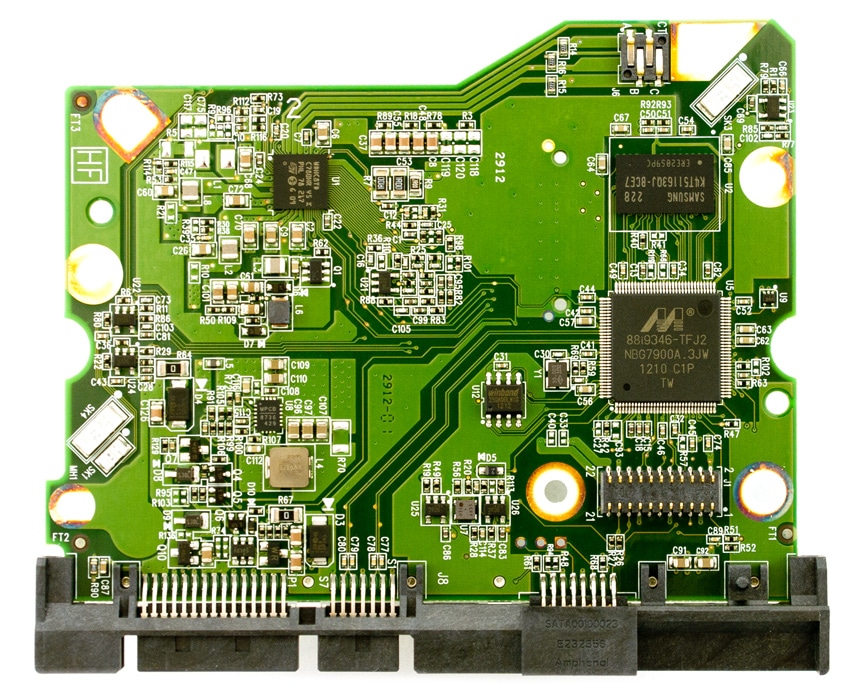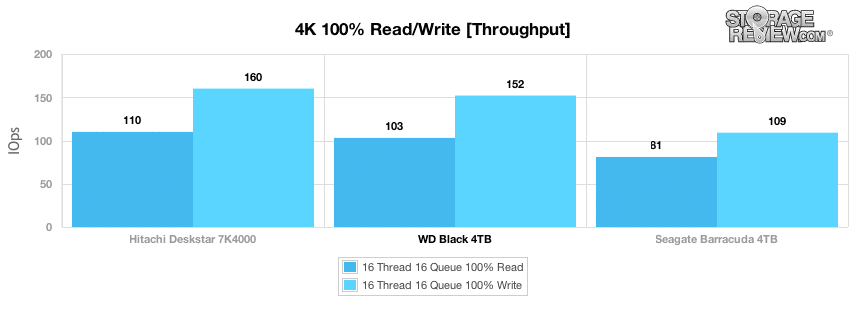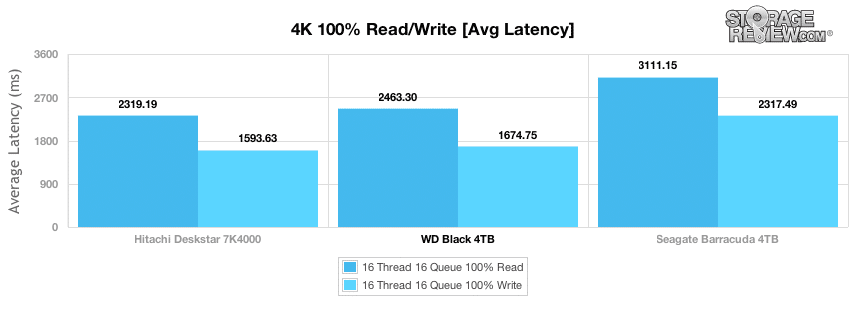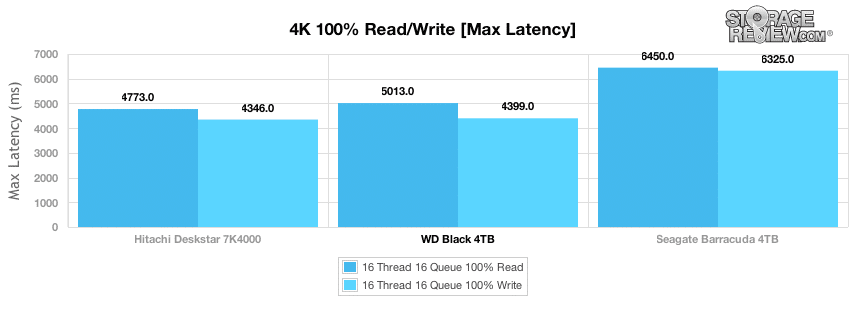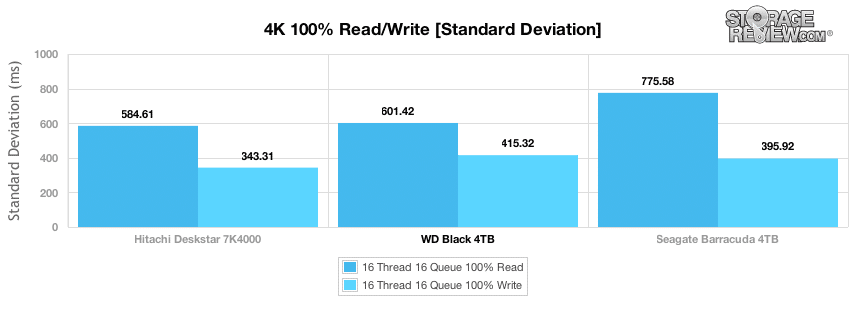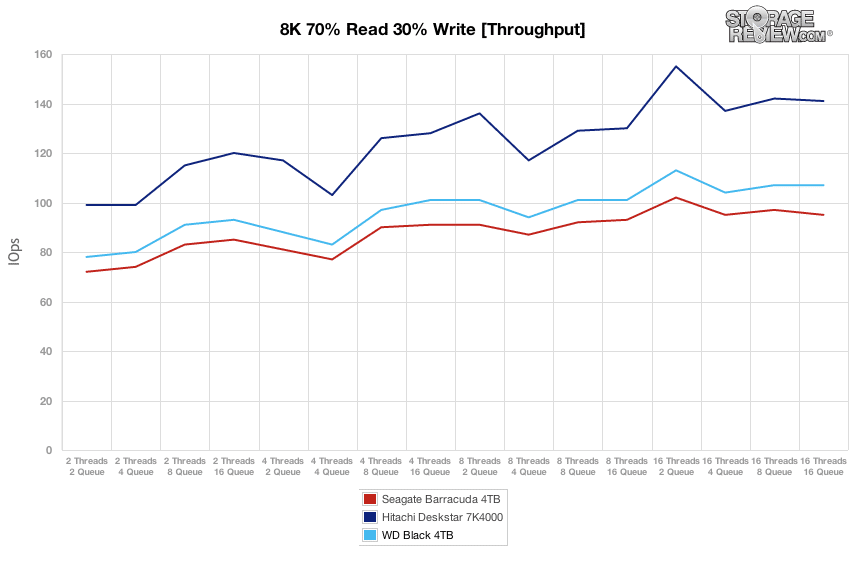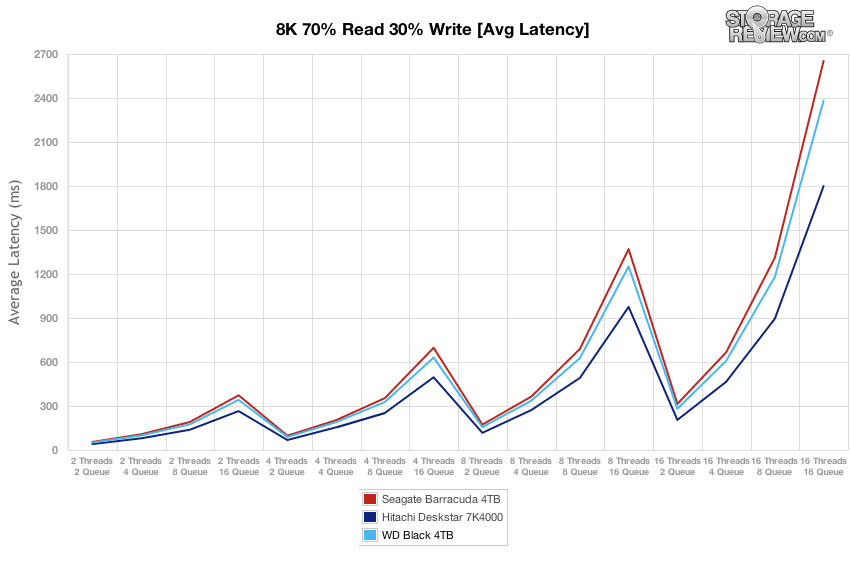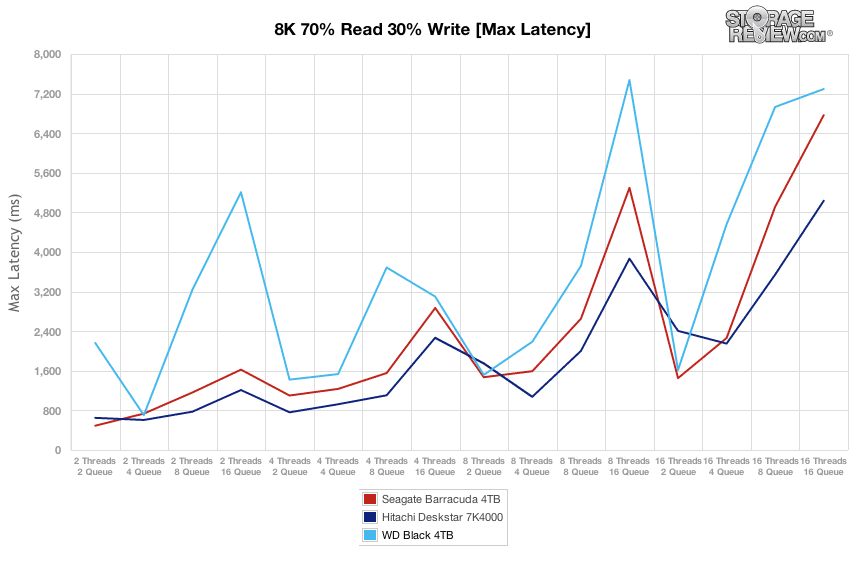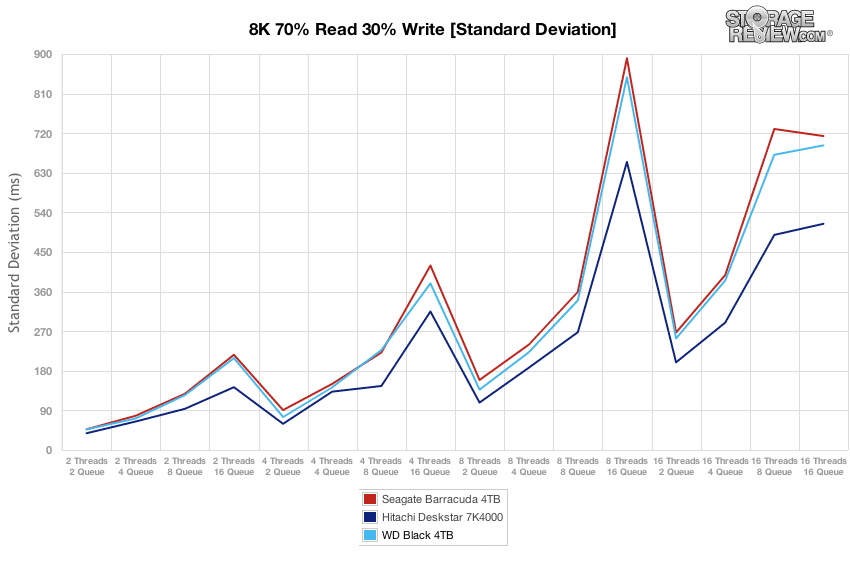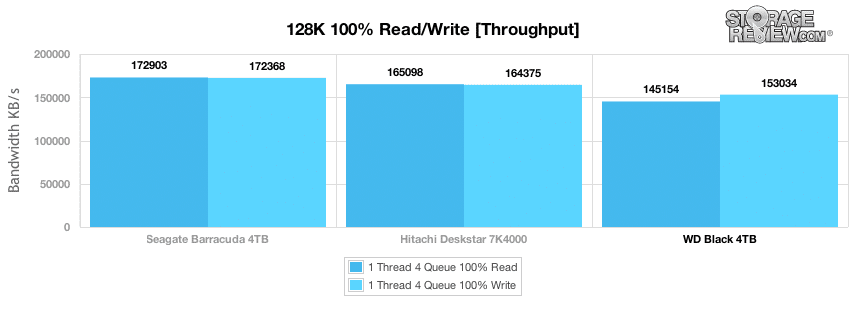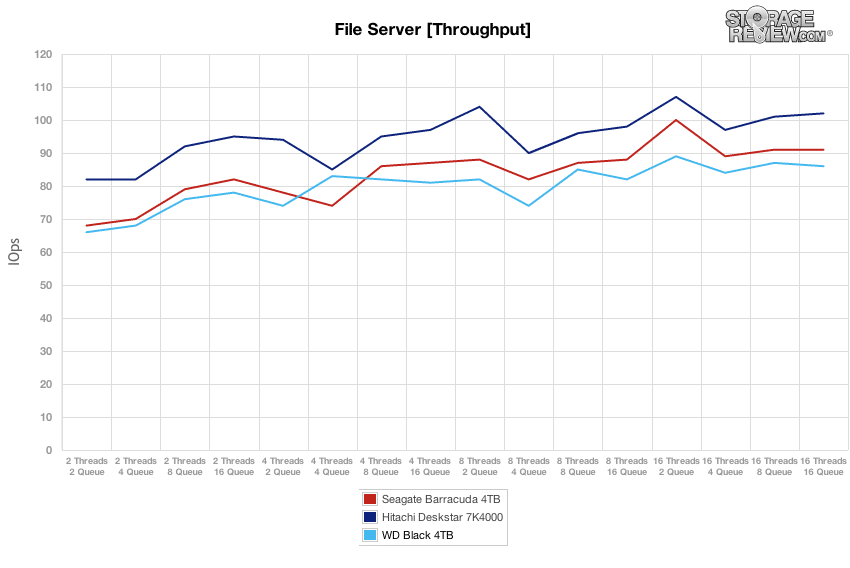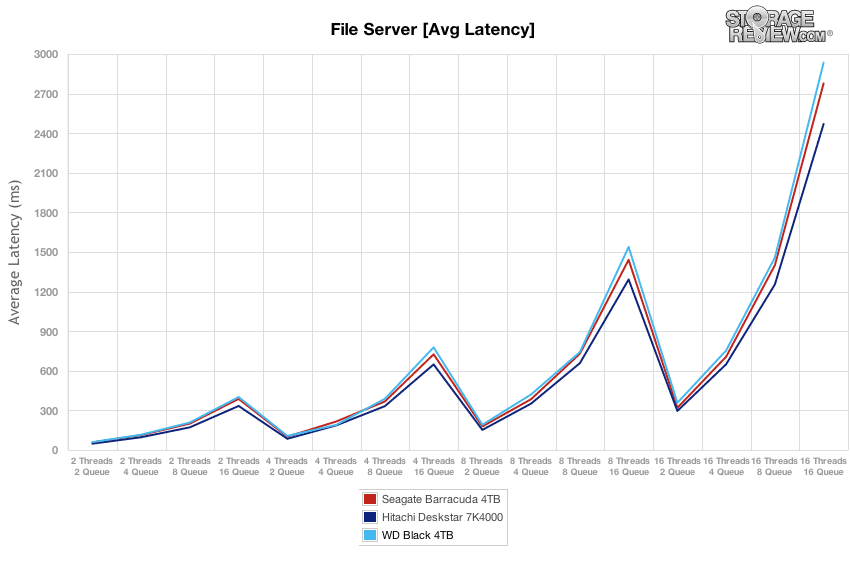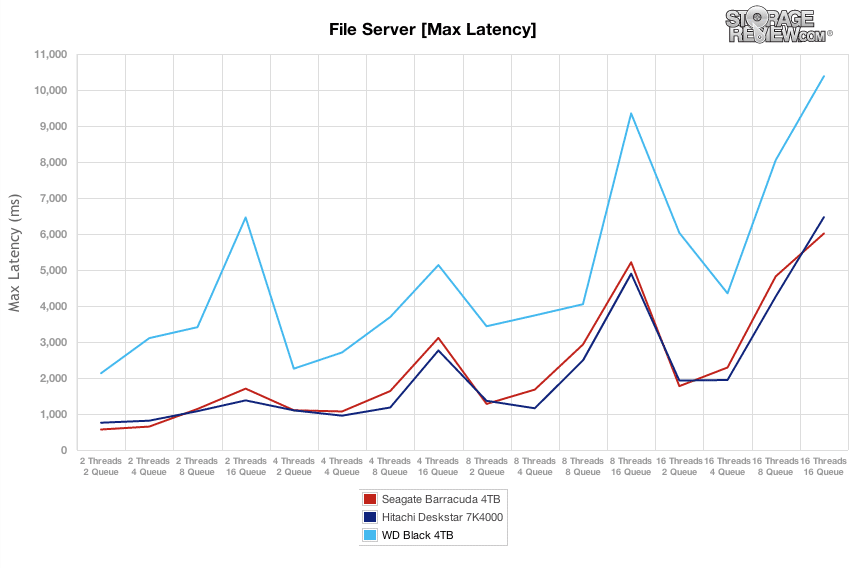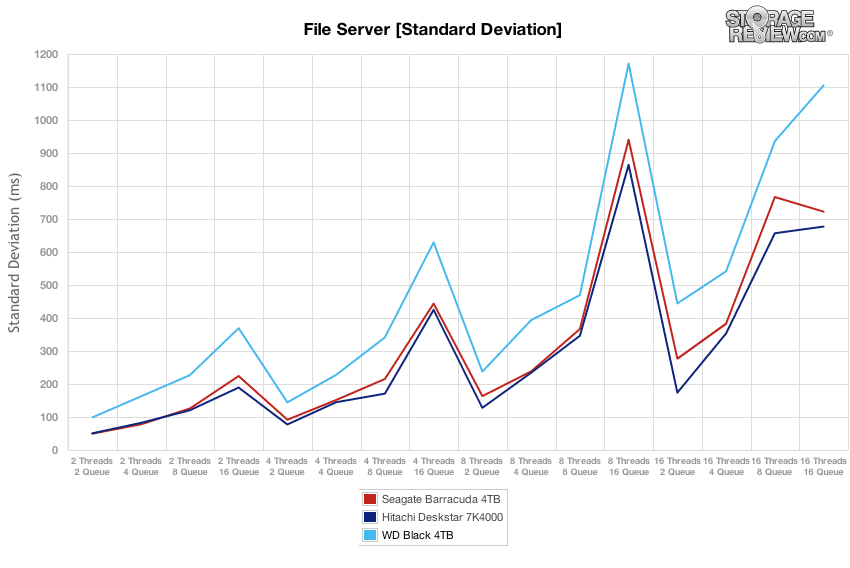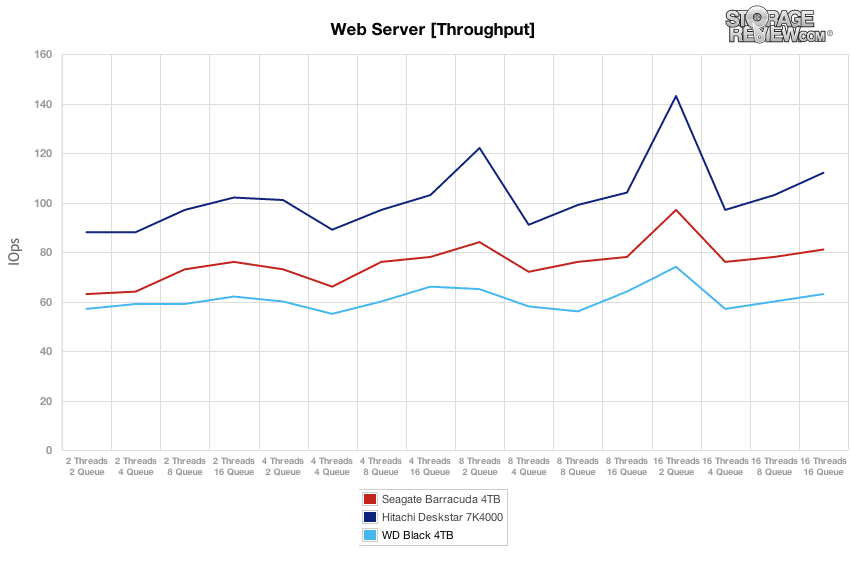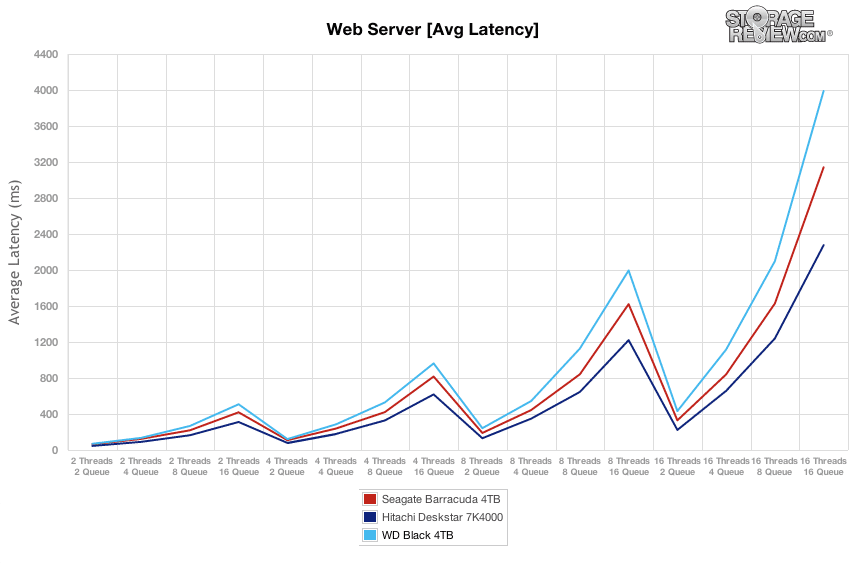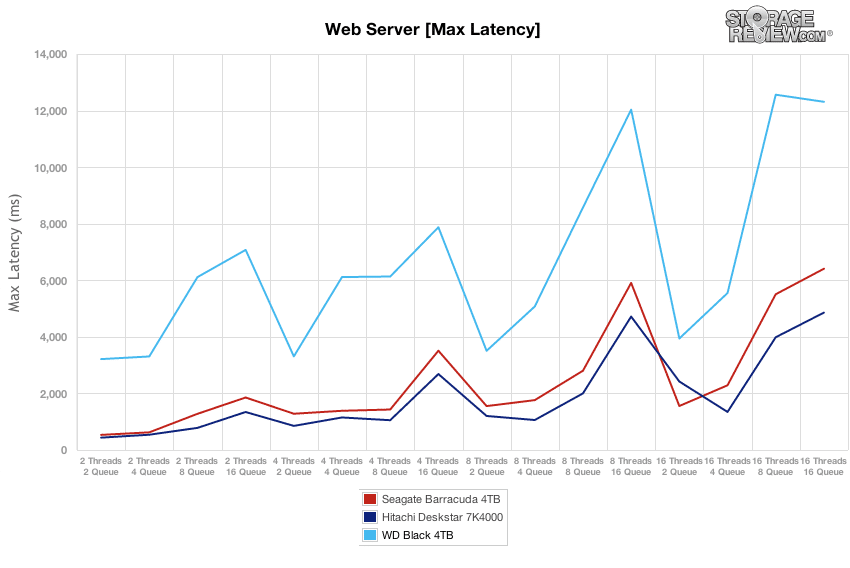
The 4TB WD Black is Western Digital’s top-capacity and top-performing 7,200 RPM client system hard drive. The standard 3.5" form factor is designed to provide bulk storage for desktop use, while still offering top class performance. WD is using their standard five platter design for the 4TB Black (note: Caviar has been dropped from the branding) that is also highlighted by a 64MB cache, SATA 6Gb/s interface to deliver 154MB/s throughput.
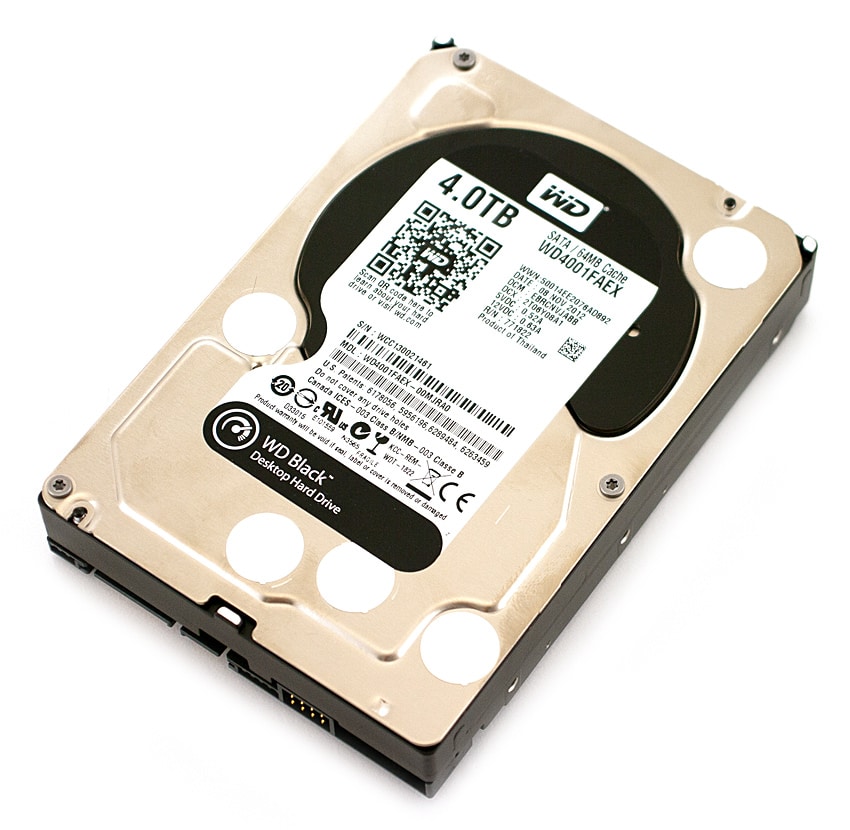
While SSDs are obviously faster – even the WD VelociRaptor boasts 205MB/s throughput – the Black line has always been about providing big capacities with best in class performance out of a 7,200 RPM spindle. With the latest 4TB Black, WD doubles the capacity available in the Black line, skipping the 3TB progressive step in their jump from 2TB to 4TB. It’s not just a capacity bump though, WD shows the 4TB drive offering a 12% boost in throughput, which is significant for the platter market.
WD continues to offer a five year warranty with the Black hard drives, which is the longest in the industry. The drives are shipping now with a street price of roughly $330 at the time of this review.
WD Black 4TB Specifications
- Interface: SATA 6Gb/s
- Rotational Speed: 7,200 RPM
- Buffer Size: 64MB
- Average Latency: 4.20 ms
- Load/unload Cycles: 300,000 minimum
- Formatted Capacity: 4,000,787 MB
- User Sectors Per Drive: 3,907,029,168
- Dimensions: Height 26.1 mm, Depth 147 mm, Width 101.6 mm
- Weight: 0.78 kg
- Operating Shock (Read): 30G, 2 ms
- Non-operating Shock: 300G, 2 ms
- Acoustics: Idle Mode: 29 dBA (average), Seek Mode: 34 dBA (average)
- Temperature: Operating -0° C to 60° C, Non-operating -40° C to 70° C
- Power Dissipation
- Read/Write: 10.40 Watts
- Idle: 8.10 Watts
- Standby: 1.20 Watts
- Sleep: 1.20 Watts
- Non-recoverable read errors per bits read: <1 in 1014
- Warranty: 5 years
Design and Build
Western Digital follows a very common design practice with all of their consumer and enterprise hard drives. The consumer oriented WD Black 4TB has a WD-standard product label, with the only difference signifying each product series besides the model number is the black insignia at the bottom of the sticker.
The WD Black 4TB is a standard 3.5" hard drive based on a SATA 6Gbps interface. We see the standard practice of Western Digital to place the heat-producing components in contact with the body of the drive. This allows things like the controller, RAM, and motor driver to dispense heat into the body acting as a large heat sink. Also, Western Digital makes use of a foam pad placed in between the drive and circuit board to help absorb vibration.
The circuit board includes a Marvel 88i9346 controller chip, as well as 64MB of DDR2 RAM from the Samsung K4T51163QJ-BCE7 module.
Testing Background and Comparables
Comparables for this review:
Editorial Note: The 4TB Seagate is not yet released as a bare drive, the performance listed comes from a 4TB external desktop hard drive, from which we pulled the Barracuda. Seagate will release the bare drive early 2013.
All enterprise and consumer HDDs are benchmarked on our enterprise testing platform based on a Lenovo ThinkServer RD240. The ThinkServer RD240 is configured with:
- 2 x Intel Xeon X5650 (2.66GHz, 12MB Cache)
- Windows Server 2008 Standard Edition R2 SP1 64-Bit and CentOS 6.2 64-Bit
- Intel 5500+ ICH10R Chipset
- Memory – 8GB (2 x 4GB) 1333Mhz DDR3 Registered RDIMMs
- LSI 9211 SAS/SATA 6.0Gb/s HBA
Enterprise Synthetic Workload Analysis
Our enterprise hard drive benchmark process preconditions each drive into steady-state with the same workload the device will be tested with under a heavy load of 16 threads with an outstanding queue of 16 per thread, and then tested in set intervals in multiple thread/queue depth profiles to show performance under light and heavy usage. Since hard drives reach their rated performance level very quickly, we only graph out the main sections of each test.
Preconditioning and Primary Steady-State Tests:
- Throughput (Read+Write IOPS Aggregate)
- Average Latency (Read+Write Latency Averaged Together)
- Max Latency (Peak Read or Write Latency)
- Latency Standard Deviation (Read+Write Standard Deviation Averaged Together)
Our Enterprise Synthetic Workload Analysis includes four profiles based on real-world tasks. These profiles have been developed to make it easier to compare to our past benchmarks as well as widely-published values such as max 4K read and write speed and 8K 70/30, which is commonly used for enterprise drives. We also included two legacy mixed workloads, the traditional File Server and Webserver, each offering a wide mix of transfer sizes.
- 4K
- 100% Read or 100% Write
- 100% 4K
- 8K 70/30
- 70% Read, 30% Write
- 100% 8K
- 128K (Sequential)
- 100% Read or 100% Write
- 100% 128K
- File Server
- 80% Read, 20% Write
- 10% 512b, 5% 1k, 5% 2k, 60% 4k, 2% 8k, 4% 16k, 4% 32k, 10% 64k
- Webserver
- 100% Read
- 22% 512b, 15% 1k, 8% 2k, 23% 4k, 15% 8k, 2% 16k, 6% 32k, 7% 64k, 1% 128k, 1% 512k
In our first workload we look at the performance of each 4TB hard drive with a 100% random 4K write or 100% 4K read workload. In this test the WD Black 4TB came in middle of the pack, trailing on the Deskstar 7K4000 in both read and write activity.
With an effective queue depth of 256 (16T/16Q) the WD Black 4TB had a read latency measuring 2,463ms and a write latency measuring 1,674ms.
Comparing max latency, the WD came in middle of the pack, with a peak write latency of 5,013ms and a peak read latency of 4,399ms.
Comparing 4K read and write latency standard deviation, the WD Black 4TB had average read consistency, and higher than average write consistency.
Switching to our 8K 70/30 mixed workload, we measure performance from a low load of 2T/2Q (QD4 effective) up to 16T/16Q (QD256 effective). In this setting the WD Black 4TB came in above the 4TB Seagate Barracuda XT, but trailed behind the Hitachi Deskstar 7K4000 by a large amount. One of the bigger differences is the Deskstar saw a larger boost as queue depth increased per thread-count, where the 4TB Black and 4TB Barracuda plateaued.
Average latency in our 8K 70/30 profile varied between 50.71ms at 2T/2Q up to 2,382ms at 16T/16Qfor the WD Black 4TB.
Comparing max latency between each 4TB hard drive, the WD Black 4TB had the highest peak response times over the duration of the test which got magnified as the queue depth increased.
While the peak latency was higher from the WD Black 4TB in our 8K 70/30 workload, it still had slightly better latency consistency than the Seagate Barracuda 4TB, but still ranked below the Hitachi Deskstar 7K4000.
Comparing the sequential performance of each hard drive in a 128K sequential workload, the Seagate Barracuda 4TB had the highest sequential read speed measuring 172.9MB/s. The WD Black 4TB came in third with a read speed measuring 145MB/s and a write speed of 153MB/s (ranked third overall as well).
Our next mixed workload measures the performance of each hard drive in our traditional File Server profile with a transfer size ranging from 512b to 64K. Over the most of the range in thread/queue loads the 4TB WD Black closely trailed the Seagate Barracuda XT, as well as the Hitachi Deskstar 7K4000. Performance from the WD Black scaled from 66 IOPS at 2T/2Q to 86 IOPS at 16T/16Q, versus the 7K4000 which scaled from 82 IOPS to 102 IOPS.
Across the thread/queue levels in our File Server workload, the 4TB WD Black ranged from an average latency of 59.66ms at 2T/2Q to 2.935ms at 16T/16Q.
Across the spectrum of applied loads, the WD Black 4TB had the highest peak latency, which spiked highest with an 8-16 queue load in each thread count. This compared to the Hitachi or Seagate 4TB offering that kept it better managed in this particular workload.
Switching our view to latency consistency in our File Server workload, the WD Black 4TB trailed the pack of consumer 4TB hard drives with the highest latency standard deviation from low to high load.
Our last mixed workload measures performance in our Web Server profile, which includes transfer sizes of 512b to 512K in a completely read-only pattern. With this 100% read activity, the 4TB WD Black trailed the pack, with transfer speeds ranging from 57 IOPS at 2T/2Q to 63 IOPS at 16T/16Q, whereas the Hitachi Deskstar 7K4000 which led the pack scaled from 88 IOPS to 112 IOPS.
Average latency in our Web Server profile ranged from 68.98ms at 2T/2Q up to 3,988ms at 16T/16Q.
Looking at max latency in our Web Server profile, we saw a similar trend from the WD Black 4TB that we saw in our previous two mixed workloads. It repeated the same pattern of its high max response times, which peaked at 8-16 queue at each thread level.
While the WD Black 4TB had the highest peak latency, its latency consistency ranked middle of the pack overall in our Web Server profile coming in in front of the Seagate Barracuda 4TB.
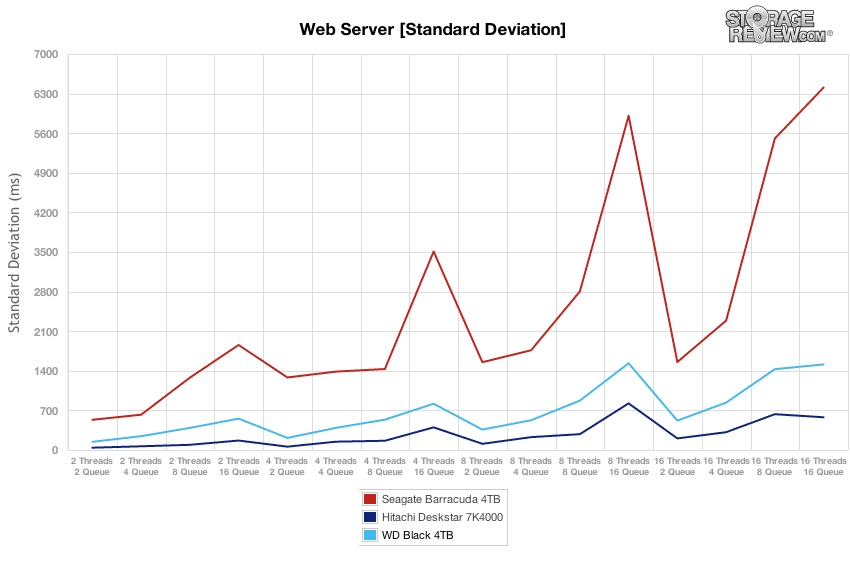
Conclusion
For those needing to bulk up on storage for all those media files or other digital packrat behavior, 4TB hard drives are a welcome option. While in the market for some time as external hard drives, the 7,200 RPM options are finally becoming more available. For its part, WD skipped the 3TB capacity entirely in their high-performance 3.5" 7,200 RPM consumer family, jumping from 2TB straight to 4TB in their Black line. WD has of course offered 3TB and 4TB enterprise hard drives, but while similar in build, the enterprise drives are very much more tuned for performance; in some cases the WD RE 4TB posts speeds twice as fast as the consumer alternative. Of course the enterprise drives come with a $150 price premium too, but it’s instructive to understand the differences between the consumer and enterprise targeting. It’s been common practice to see enterprise storage array vendors and the like sneaking consumer hard drives into enterprise gear. With drive tuning set the way it is in WD’s line, such behavior will probably decline as the cost savings vs performance hit won’t be worthwhile.
That’s not to say that the WD Black 4TB is a slug. It does well in its intended market and is comparable in some areas with other drives in the high-performance consumer HDD category. In our 100% random 4K workload, it trailed the Hitachi Deskstar 7K4000, but came in on top of the Seagate Barracuda. The same could be said about our 8K 70/30 workload, where it offered a small boost in front of the Barracuda, although it trailed the Deskstar 7K4000 by a wider margin. In our File Server and Web Server workloads the 4TB Black trailed the competition in I/O and had trouble keeping peak latency in check as queue depth increased. Given the current price parity between the Hitachi Deskstar 7k4000 and the WD Black 4TB, it’s difficult to recommend the WD as it falls behind Hitachi almost everywhere. However, should a significant price gap materialize, consumers would be content with the WD as it’s hard to "feel" the performance difference in most use cases.
Pros
- Top capacity point for client workstation use
- Five year warranty
Cons
- Trails Hitachi Deskstar 7k4000 in almost every workload
- High max latency issues in all mixed workloads
Bottom Line
The WD Black 4TB provides client desktop users with the maximum capacity available in a 7,200 RPM performance hard drive. For those who need big bulk storage but don’t want to drop down to slower spindle speeds and lower performance, the WD Black 4TB provides a viable alternative.

